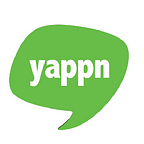Q: When does English become a foreign language to those fluent in English?
A: When one communicates in sign language.
Sign language is actually a collection of over 300 different languages that developed in deaf communities in many different places and times and under different circumstances than spoken languages. As a consequence, American Sign, British Sign and Auslan, the Australian version, are all so different they’re in essence foreign languages for the other signers.
It’s a common misconception that American Sign Language (ASL) is monlithically used by deaf communities everywhere. While it does serve as a lingua franca for signers as a widely-learned second language, it’s not the original and it is not used world-wide. In fact, it’s uncertain as to where or when signing originated as it has developed independently around the world. Many pre-Columbian Natives developed sign languages and regarded deaf people as perfectly educable, unlike the prevailing contemporary opinion in Europe which held that the deaf were hopelessly incapable. Aristotle may well claim the dubious label of being the first to write them off, and this ‘wisdom’ wasn’t challenged until the Renaissance. Until then, deaf people had few rights and in some places required guardians.
Related: Deaf is not a bad word
There are even ASL dialects including Black, Bolivian, Ghanaian, Nigerian, and Francophone African. Interestingly, that last, despite the name, bears little relation to French Sign Language although its students learn written French. The ASL emphasis is because most of the deaf educational systems in Africa were founded by an American missionary. The exception is the Algerian Sign Language, which is grounded in the French version.
It’s entirely possible that sign language is the earliest form of human communication, as human beings aren’t believed to have developed spoken language until around 100,000 years ago, although this time frame is up for dispute. One might also argue that perhaps humans never entirely gave up sign language as both the French & Italian have a tendency towards using gestures for emphasis.
The history of modern-day sign language’s multilingual variants probably begin in the eighth century when the English monk Bede described the first known manual alphabet, although European monks may have used manual communication before him for communicating while under a vow of silence, administering to the sick and as helpful memory devices. The British manual alphabet was consolidated by 1720. In France, the Old French Sign Language was recorded by Charles Michel de l’Épée through his relationship with two deaf sisters who used sign language to communicate with each other and the local deaf community. It has since evolved into the more modern French Sign Language.
Why do BSL, ASL and Auslan sign language differ so much?
Each sign language developed independently of the others, as we’ve seen already with British and French Sign Language. ASL is believed to have originated at the American School for the Deaf in Hartford, Connecticut, the oldest permanent school for those unable to hear. Sign language, however, had been in use prior to its establishment in 1817, where New England already had thriving deaf communities in New Hampshire, Maine, and a Massachusetts community with a particularly high rate of genetic deafness, Martha’s Vineyard.
The biggest difference between ASL and British Sign Language (BSL) is that ASL uses one-handed fingerspelling while BSL uses both hands. The lexicons differ too, just as they would for spoken English and any other language.
Auslan (Australian) developed more organically than ASL and BSL, without any one defining originator like Bede or l’Épée. Although it shares commonality with BSL, it differs greatly from spoken English with a different word order and often no direct sign-to-word equivalence. In addition, the mouth gesture that accompanies a sign may differ from the meaning of the word — the sign for ‘thick’ is paired with a mouth gesture that says ‘fahth.’
Birth of a brand-new language
To see how the birth of a sign language isn’t, in some respects, much different from spoken language generation, we have the modern-day example of how the Nicaraguan Sign Language developed in the 1970s and 1980s via a group of disparate children brought together in a school, along with their individual home sign language each developed to communicate with their respective non-deaf families. Through interacting with each other, they first developed a pidgin signing system and then a creole-type system. NSL was a tremendous opportunity for linguists to document the creation of a brand-new language — irrespective of gestures or speech.
Related: The Difference Between Pidgin And Creole
In the end, ‘sign language’ refers only to the large body of disparate languages that constitute the communication method for the deaf community, just as ‘language’ is the catchall word for spoken tongues. Signage develops much as human language did and does, through migration, the communication needs of individual communities, and different cultures and histories. Why sign language is so multilingual is no more of a mystery than why spoken language is.
Did you know National Deaf History Month is March 13th to April 15th? It promotes awareness of deaf culture and the many contributions of the deaf. Yappn celebrates deaf communities’ rich lingual diversity.
This post originally appeared on the blog Yappn About.
Yappn Corp is an enhanced machine translation company offering translations in dozens of languages and a big smile, which is universally understood by deaf people as yet another word for ‘friend’! For more information please contact sales@yappn.com or call us at +1.905.763.3510 x246.
Never miss out on another Yappn blog post! We love language, translation, and the cool machine translation technology driving it. Not to mention eCommerce, Asian growth, and how we’re all learning to communicate better with each other. Sign up for our new post email notifications today! We update the blog once a week. You might also get the occasional press release. We respect your Inbox!
Written by Nicole Chardenet, Sales Development Rep at Yappn
